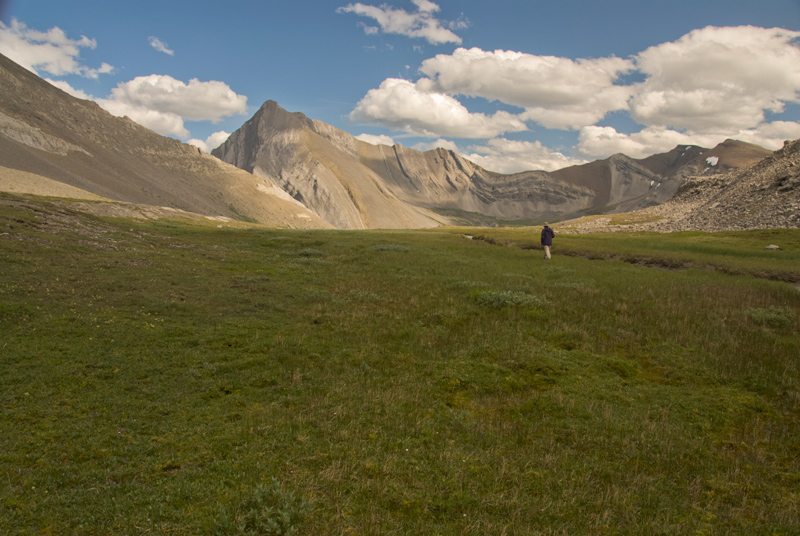Willmore Wilderness Park
Hiking Trip Information
| Entry Page | Getting There | Maps | Day Packs | Duffels |
| Bathing, Toilets & Hygiene | Water | Bugs | Blisters | First Aid & Medical Emergencies |
Foot Care:
Here are some internet places for preparation, foot care, blister prevention and what to do if you get a blister.
http://walking.about.com/cs/blisterschafing/bb/bybblister.htm
http://walking.about.com/od/blisterschafing/tp/blisterprep.htm
http://walking.about.com/lr/walking_injuries/245063/4/
http://www.webmd.com/skin-problems-and-treatments/guide/understanding-blister-treatment
The limiting factors in determining your enjoyment of a trip are a person's physical conditioning and foot problems. People who get blisters may not be able to hike for the remainder of the trip.
Blisters are almost always preventable. You have to be willing to stop and say to the group, "I have a hot spot and I need to tape my feet."A hotspot is any sensation of pressure or rubbing or soreness. If you cave into a group and decide not to mention that you have a 'hot spot' and you do develop a blister, you'll not enjoy the hiking and you'll affect the entire group because there's nothing worse than seeing one of your companions having to sit in camp and miss out a great hike .
Some things to do:
* pre-tape when you know that your heels are susceptible to blisters.
* your boots a lot prior to the trip. This will be important especially if your boots are relatively new or you've not been in them a lot lately. The boots need to soften up while your feet toughen up.
* don't get a pedicure prior to coming--you need those callouses. Someone did this last year, and for the first time in her hiking career she developed severe blisters and was unable to hike for several days.
* bring your own blister repair kit. This should include blister bandaids (these breathe and yet seal off the blister), moleskin, and a good tape. Some folks use duct tape.
* if you do use tape of any kind, remove the tape each evening prior to bed. Otherwise, you may lose some skin and increase the problem.
* Physical preparation:
My suggestion is to do something like the following during the 4 weeks prior to a trip:
Week 1: Walk at least one hour a day for 3-5 days out of the week.
Week 2: Walk at least one hour a day for 3-5 days a week, and on two days stretch your walks to 2 hours and make at least 2 of the walks at a fast pace. If you can find a staircase or a hillside, do some stair climbing, both up and down.
Week 3: Walk at least one hour a day, fast pace, for 5 days and on two days, stretch your walks to 2 hours and include some stair climbing and wear a light pack with at least 15 pounds in it to condition your shoulders.
Week 4: Walk at least one hour a day for 5 days, and on two to three days take two long walks, 3-4 hours, including some stairs wherever you can find them and wear a light pack with at least 15 pounds in it.
Wear your boots on these walks. But Don't let blisters develop prior to the hike. Pay attention to any signs of discomfort and tape as soon as you feel 'hot spots' or pretape.

Hanging Basin: North Fork of Persimmon Creek Headwaters